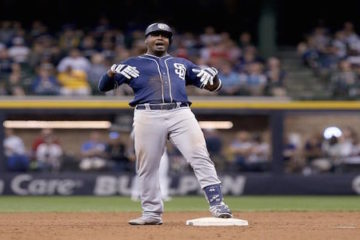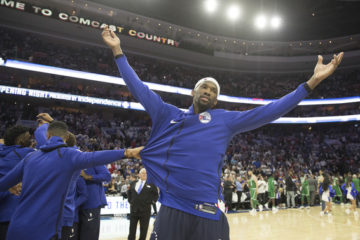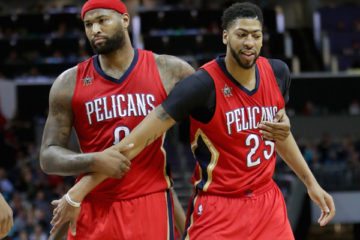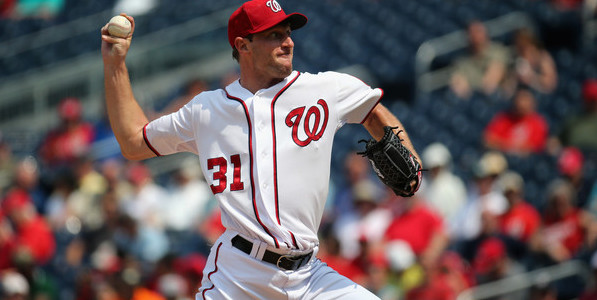An Intro To Daily Fantasy NASCAR
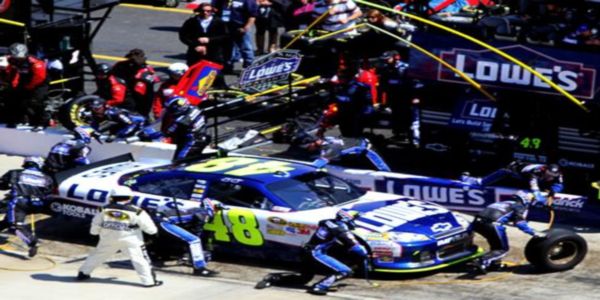

NASCAR Daily Fantasy Sports is finally here! I’m sure many of you are skeptical about the prospect of being able to consistently win money on a sport with seemingly an incredible amount of variance. First of all, there is a lot of variance. All it takes to turn a great day into a bad day is a pit road speeding — or otherwise — penalty, a random piece of debris that attaches to the grille of your car, getting spun out by another driver, or randomly having a tire go down. That’s why it pays to understand as much as you can about the sport. It may seem very random, and while it is at times, there’s a lot of predictability especially at certain tracks.
Let’s begin with Charlotte Motor Speedway, the locale for Sunday’s Memorial Day race on May 24th. The “Coca-Cola 600” is the longest race (in mileage) on the NASCAR circuit. The 1.5 mile track was repaved in 2006 not coincidentally after Jimmie Johnson took his Lowe’s #48 Chevrolet to victory lane in five of the six races at Charlotte — beginning in 2003. Since then, Johnson — the sports’ most dominant driver — has gone on to win the Coca-Cola 600/Bank of America 500 (the name of the Fall season race) two more times. In addition, Johnson has won the NASCAR Sprint Cup All-Star race which takes place in Charlotte one weekend before the Coke 600 race, a record four times — including in 2012 and 2013.
The Coke 600 is a unique race given that it starts at dusk (6:00 pm), thus causing the track to go through an enormous amount of changes throughout the race. The race can sometimes be difficult to predict, as only three of the past 32 races have been won from the pole position (all by Jimmie Johnson). Since track conditions will change so much throughout the race, it means that pit strategy will be paramount to a driver’s success. It also means that, oftentimes, the cars are not driven to the events to keep them safe. Either they hire a company like CarsRelo to handle this for them, or they have their own transportation team in house
The Big Edge at Charlotte:
The biggest edge to be gained at a place like Charlotte is solely based on the ability to find cars that are good on old tires. Long green flag runs are quite common at Charlotte, and not only will cars that are strong on old tires pass more cars in the later stages of green flag runs, they will also be able to stay out on track in key mid-race or late-race caution scenarios in order to gain vitally important track position.
Teams with cars that struggle with speed and handling as tires wear down throughout the night, will struggle most in the pre-nightfall portion of the race when the track is incredibly slick (from the heat of the sun). This is when early crashes and cautions can happen to such a car, shaping the rest of their night in a potentially bad way. Older tires will gain a little longer life later in the night as the track temperature cools, which adds grip. Finally, cars that don’t have to fight loose conditions on older tires will gain important fuel mileage advantages, another massive point of emphasis at a track like Charlotte.
It really will NOT be enough to look at practice times at the end of the day. The five-lap averages in a vacuum don’t mean much. Certain crews will be running lap times testing out old tires and green flag runs, and figuring out those lap times is paramount to picking the best cars next Sunday.
Another big edge will be to figure out if any of these cars in particular are teams that have not yet won a race. Drivers like Jeff Gordon and his Drive to End Hunger #24 Chevy, Martin Truex Jr and his #47 Furniture Row Motorsports Chevy (also sitting 2nd in overall points), Jamie McMurray and his #1 McDonald’s Chevy, and Kasey Kahne and his #5 Farmers Insurance/Time Warner Cable Chevrolet, are all in the top 10 in total points but are winless this year. The new “win and you are in” Chase for the Championship format, will give these particular drivers (and others without a win this season) to be more aggressive on pit strategy if their cars allow them the luxury.
A Clean Slate: Track History is Mostly Moot
Many sources will give out advice based on how cars have historically finished at a certain track. However, this is NOT a preferred source of information because of the MASSIVE rule changes undergone prior to this 2015 season. Here are the most important rule changes:
- Horsepower reduction from 850 HP to 725 HP
- Rear spoiler adjustment to 6 inches (down from 8 inches in 2014) — this affects handling, and has made cars “loose” conditions more exaggerated especially with hotter track temperatures.
- Insertion of in-car adjustable track bar (allows drivers to manually adjust handling conditions instead of having to wait until they can pit to fix it)
- Ban on private engine testing
These are the four changes that we NASCAR DFS players need to be aware of. The reason that track history for the most part is now moot — it’s still relevant in the cases of drivers/teams/crew chiefs that are historically good at dealing with changing night-time track conditions — is because with the new ban on private engine testing the best equipment will usually perform best on race day, and won’t allow for typical tuning after practice and qualifying.
We have already run three of the four “Quad-Oval” 1.5 mile tracks this season under the new rules package, and Charlotte Motor Speedway is the fourth. Kevin Harvick and his #4 Budweiser Chevrolet from Stewart-Haas Racing (Hendrick Engine package) has dominated mile and a half tracks this year, with three second place finishes and one win (finished second at Kansas Motor Speedway — a D-shaped 1.5 mile oval). Jimmie Johnson has all three other 1.5 mile race track wins. Another note is that Regan Smith who drives the #49 for Chip Ganassi Racing (also use Hendrick Engines on lease) has a 16th and 17th place finish this year at Atlanta and Las Vegas respectfully, despite starting 38th and 36th in those races.
However, we can’t just pick high priced stud drivers like these two, since the scoring format forces us to focus on picking who we think will be “the biggest movers” as well. So for this, it will be interesting to see how the in-car adjustable track bar plays a factor, the way it did for Kurt Busch at Richmond International Speedway. Busch commented in practice that his car was responding “really well” to the track bar. Busch ended up winning after starting third. He led 291 of 400 laps. Richmond is yet another track on the circuit that begins at dusk, and as such, experiences a vast amount of track condition changes — like Charlotte.
Drivers are very candid about their cars in interviews and in practice over the radio — FOX Sports usually plays many of the interesting communicative pit radio notes during practice sessions. So much like the old tires factor, knowing which cars are responding well to their manually adjustable track bar, will be a big edge.
Look for my practice report late on Friday!



